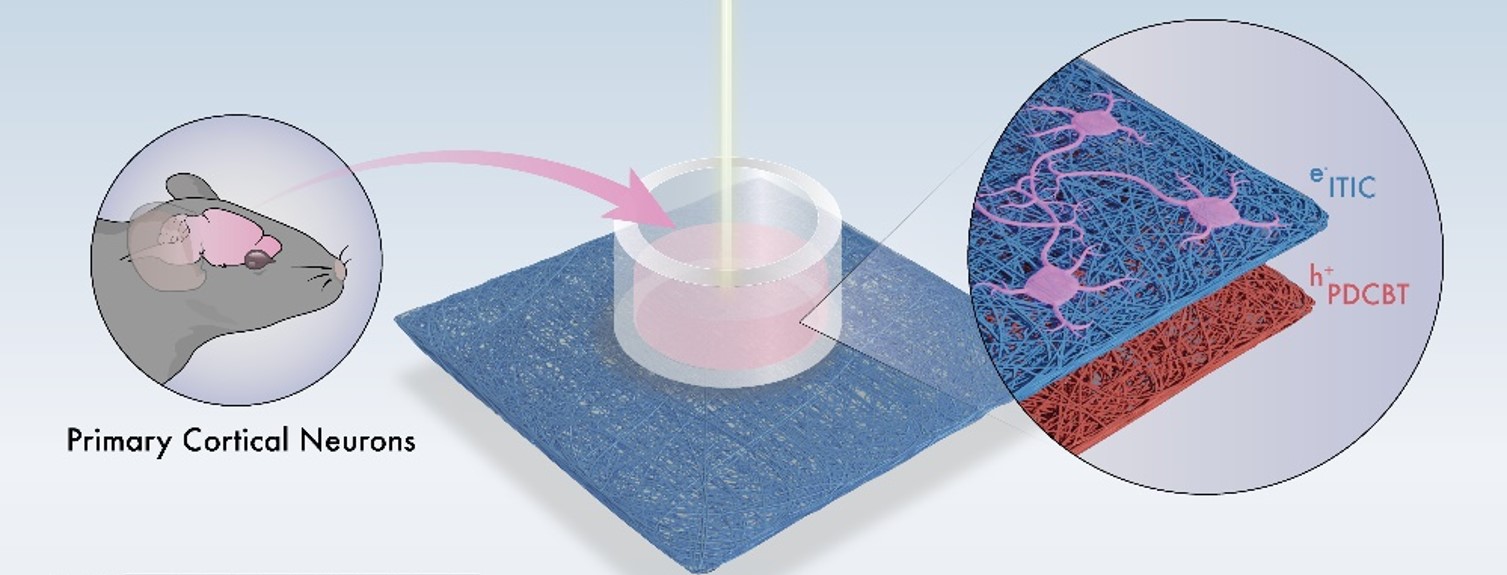MSc thesis project proposal
[2024] Wireless Stimulation of the Brain with Light
Background: The use of light to control biological activity has been widely used in clinical practice in different medical fields, such as ophthalmology[1]. Recent advances in light-responsive, biomedical devices unlock new concepts, spanning from artificial vision[2] to wireless stimulation of the nervous system.[3] Recently, devices that use organic semiconductors able to modulate cell activity with light attracted significant interest because of relatively simple fabrication requirements and device setup,[4] and strong absorption of light in the visible spectrum (i.e. wavelengths ~400 nm to 700 nm). Organic semiconductor thin films are usually directly interfaced with cells or tissue.[5] Therefore, light can be absorbed and converted into a cue that modulates the activity of cells in close proximity.
Aim: characterization of light-sensitive organic semiconducting devices and their use in stimulating neurons. Relationships between light intensity, stimulation frequency and photo-current generation are targeted. After establishing these parameters the devices will be used for neuron cultures and stimulation. Particular attention will be given to tuning the light stimulation within the phototherapeutic window limit – light at wavelengths between 700 nm - 900 nm penetrates the human body deeper.
Literature
[1] W.-M. Chan et al. , T.-H. Wong, Ophthalmology 2004, 111, 1576.
[2] J. F. Maya-Vetencourt et al., Nat. Mater. 2017, 16, 681.
[3] M. Berggren et al., Chem. Rev. 2022, DOI 10.1021/acs.chemrev.1c00390.
[4] M. Silverå-Ejneby et al., bioRxiv 2020, 2020.07.01.182113.
[5] A. Savva et al., Photo-Chemical Stimulation of Neurons with OrganicSemiconductors, Adv. Sci.2023,10, 2300473
Assignment
1st part: Literature review of light-sensitive devices for wireless stimulation of living tissue.
2nd part: Design, fabrication, and characterization of light sensitive bioelectronic devices based on p-type and n-type organic semiconductors. Interfacing with neurons and light stimulation.
Requirements
MSc students from Microelectronics, Biomedical Engineering, Mechanical Engineering, Materials Science and Electrical Engineering are welcomed to apply. Interested students should contact Dr. Achilleas Savva (a.savva@tudelft.nl), by including their CV, the list of courses attended, and a motivation letter.
Contact
dr. Achilleas Savva
Bioelectronics Group
Department of Microelectronics
Last modified: 2024-03-06
